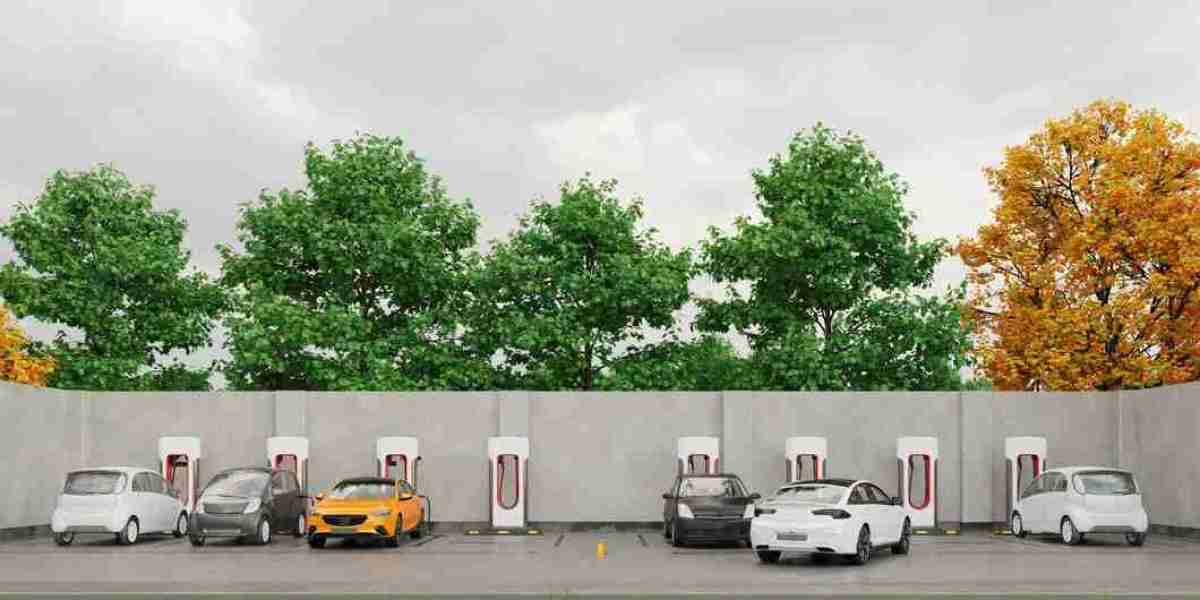The electric vehicle (EV) market is undergoing significant growth as the global demand for environmentally friendly alternatives to traditional gasoline-powered vehicles rises. The electric vehicle charging station market, an integral part of this growth, has faced numerous entry barriers. These barriers stem from factors such as infrastructure limitations, regulatory hurdles, and financial challenges. However, as the demand for EVs surges, overcoming these entry barriers has become essential for stakeholders seeking to participate in this lucrative and fast-evolving market.
1. High Initial Capital Investment
One of the most significant entry barriers in the electric vehicle charging station market is the substantial capital required for setup. Establishing a new charging station often requires a significant investment in equipment, including charging units, transformers, energy storage systems, and infrastructure for grid connectivity. Additionally, property leasing or purchasing and the installation costs can push initial expenses to millions of dollars. Such a high upfront cost can deter new entrants, particularly small and medium-sized enterprises (SMEs) from entering the market.
Furthermore, many areas lack sufficient power grid infrastructure to support widespread deployment. New entrants will often have to invest in grid enhancement, which requires coordination with local authorities and utilities, adding further complexity and costs. Investors often hesitate to make such hefty investments, especially in areas with low EV adoption rates, which limits the viability of charging station ventures in early stages.
2. Regulatory and Licensing Issues
Regulatory concerns are another key barrier. The installation and operation of electric vehicle charging stations are subject to various federal, state, and local laws, each of which can vary significantly across regions. These regulations can include zoning restrictions, permits, health and safety standards, and other local ordinances. In some regions, lack of clarity in regulations and the need to obtain multiple approvals can delay or even prevent market entry. Compliance with environmental standards is also critical as operators must ensure that their stations minimize impacts on local ecosystems.
Moreover, licensing requirements can include ongoing inspections, operational approvals, and maintaining environmental safeguards, all of which add additional complexity. The challenge for newcomers is understanding and navigating this regulatory maze, which can often be a daunting and costly process.
3. Limited Charging Infrastructure and Accessibility
Even in regions where EV sales are high, charging infrastructure is often insufficient. A major deterrent for entry is the fragmentation of infrastructure and a lack of unified standards for charging technologies, such as charging connector types and protocols. Existing players in the market may have established positions in key geographic areas, making it difficult for new entrants to compete.
In addition, accessibility concerns such as location availability for charging stations play a significant role in discouraging new businesses. Urban areas may be congested and expensive for station setup, while rural regions may have insufficient demand to justify large investments. This regional discrepancy leaves a large untapped market that still needs adequate charging infrastructure, creating a long-term challenge.
4. Competing with Established Players and Market Saturation
The EV charging station market, though still emerging, already contains several large players with substantial experience, infrastructure, and market share. These established companies often have competitive advantages in terms of customer loyalty, brand recognition, and economies of scale that new entrants cannot easily replicate. New companies also have to contend with these incumbents, who often benefit from strategically placed stations and established partnerships with automotive manufacturers, energy companies, and other key stakeholders in the EV ecosystem.
As competition intensifies, market saturation is another looming issue. New entrants must differentiate themselves in a crowded marketplace. Charging networks must consider adding unique features or offering better services, such as faster charging times, integrated mobile apps, and customer-centric subscription plans to stay competitive, which adds to the complexity and costs of starting out.
5. Operational and Maintenance Costs
Running an EV charging station involves a variety of ongoing operational expenses, including electricity procurement, site rental costs, insurance, and routine maintenance. Ensuring uptime, particularly at peak times, requires continuous monitoring and response systems, which could add additional costs for managing customer demand effectively. As such, the ability to maintain consistent operations while keeping costs down is a constant challenge.
For entrants who have not yet established their brand presence, any technical malfunctions or service disruptions may harm customer trust, which further complicates the challenge of market penetration. Additionally, the continual technological advancements in charging equipment mean constant updates to the systems, making operational costs higher in the long term.
Conclusion
Despite the numerous entry barriers facing the electric vehicle charging station market, overcoming these challenges can lead to significant growth and profit potential. As the market continues to evolve, advancements in technology, improved regulatory frameworks, and expanded public-private partnerships could pave the way for a more accessible and inclusive entry into the market. Early and strategic investment in understanding these challenges is crucial for businesses aiming to capitalize on the rise of electric vehicles.



